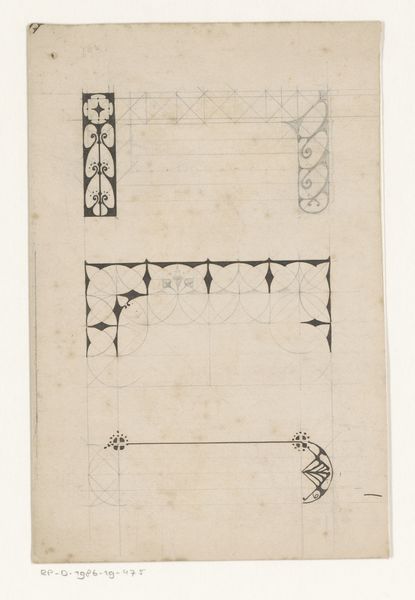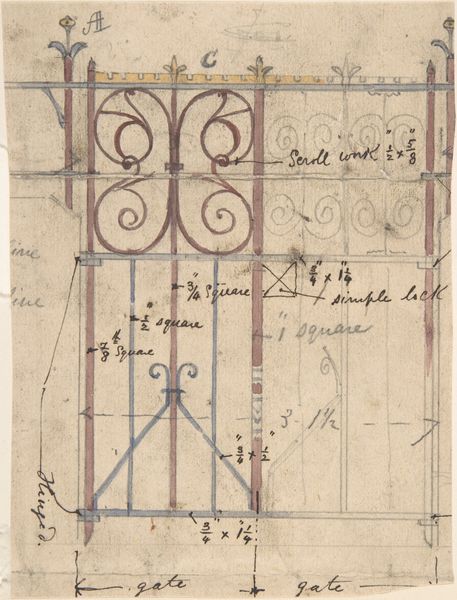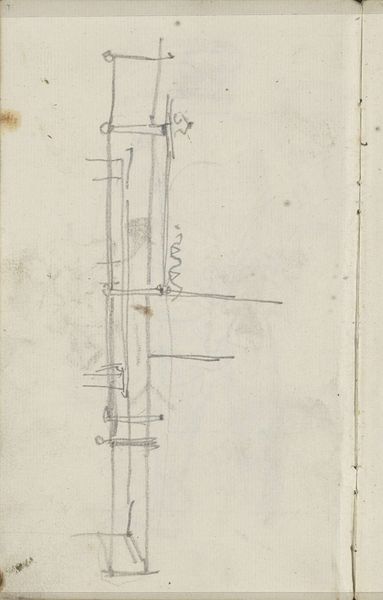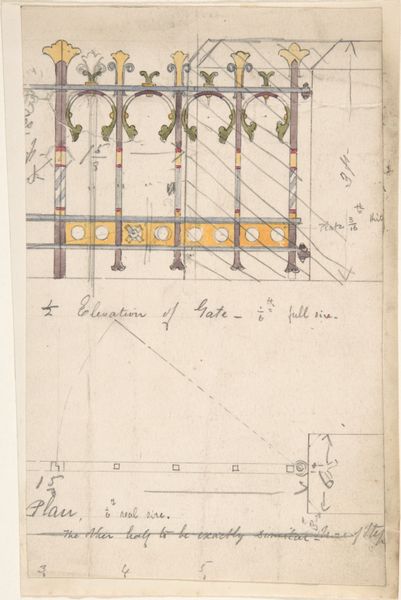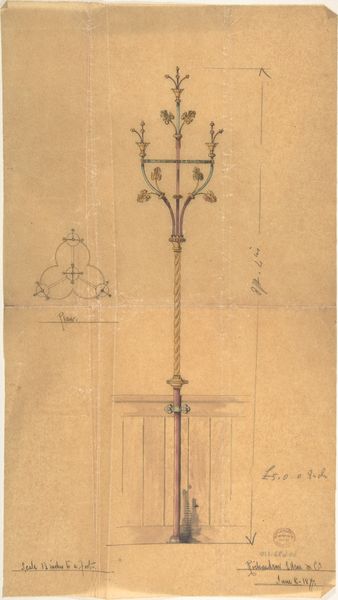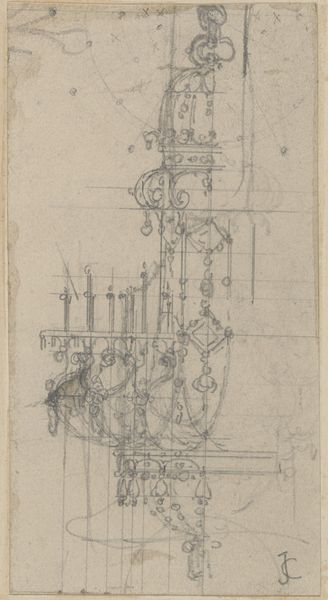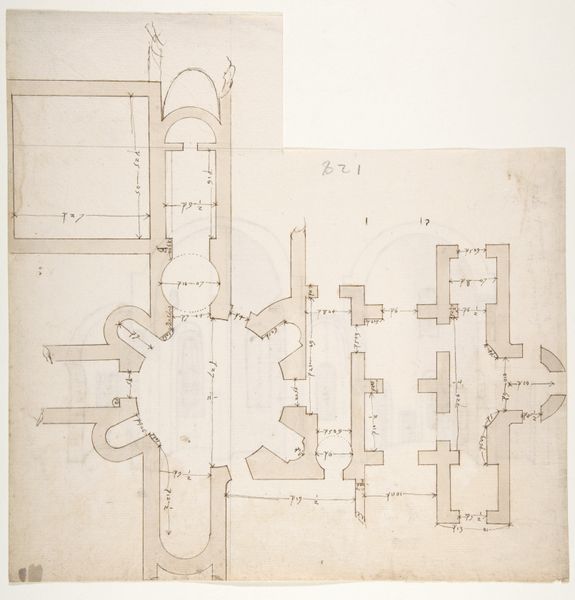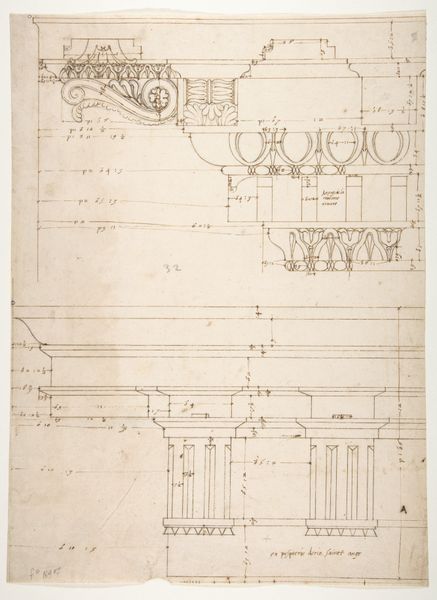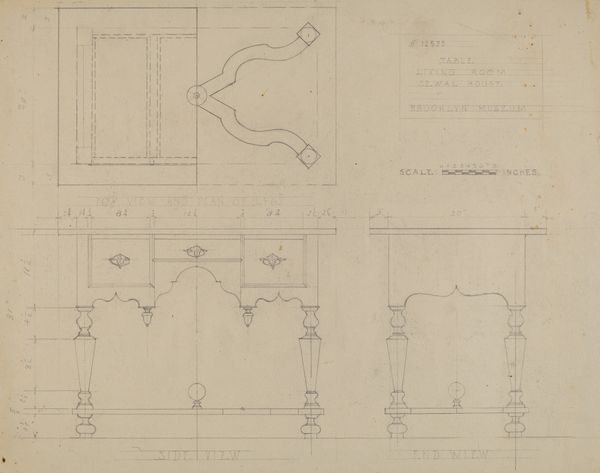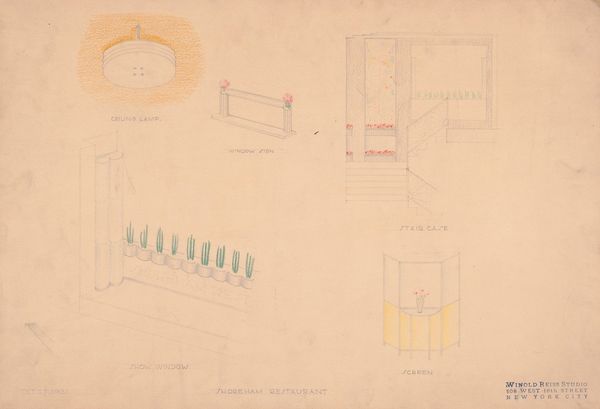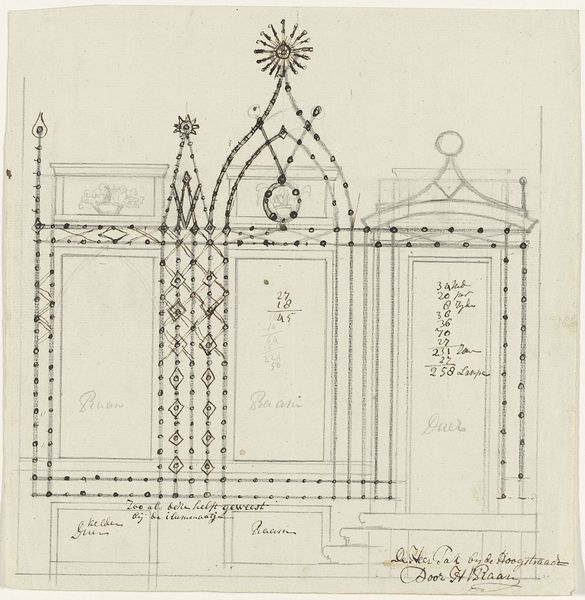
drawing, print, architecture
#
architectural sketch
#
drawing
#
toned paper
#
quirky sketch
# print
#
incomplete sketchy
#
etching
#
arch
#
architectural drawing
#
architecture drawing
#
watercolour bleed
#
watercolour illustration
#
watercolor
#
architecture
Dimensions: sheet: 9 13/16 x 9 13/16 in. (25 x 25 cm)
Copyright: Public Domain
Curator: Allow me to introduce you to “Designs for Church Wall Standards,” a drawing created between 1875 and 1885 by Richardson Ellson & Co. The piece, a watercolor, graphite, and etching on toned paper, resides here at The Met. Editor: My immediate impression is one of delightful fragility. The artist’s hand feels so present; I can practically feel the graphite scratching against the paper. It’s a beautiful arrangement of forms, too. Curator: Indeed. Ellson & Co. operated during a time of immense church building and renovation, fuelled by Victorian-era religious fervor and increased wealth. These designs reveal not only the aesthetic tastes of the period but also the function of religious structures as public displays of affluence and moral virtue. Editor: Absolutely. The drawings use a very controlled palette—subdued greens, browns, and creams which lend an air of serenity but it's all organized by line, which is also quite delicate and precise, that highlights form and detail so the overall effect gives it a certain austerity, don’t you agree? Curator: That’s certainly a fitting observation. The formality of these architectural sketches provided churches with very detailed blueprints and would often become a status symbol, evidence of sophistication, artistry, and wealth of a parish, a social currency of sorts during this period. Editor: What's particularly intriguing is how the artist has rendered depth using very subtle tonal variations, and the composition is balanced with great intuition to give a sense of structure using the materials, as architecture usually does, to invoke the impression of immovability. Curator: Seeing this kind of design work contextualizes the priorities in society in an interesting light. Architectural drawings for sacred places became crucial in shaping and expressing identities for many during this time. Editor: Looking at it, I keep returning to the interplay between its apparent simplicity and underlying complexity. It truly holds your eye, an invitation to unpack it more thoroughly. Curator: Yes, the layers of meaning woven into the function of the imagery invite contemplation. A quiet but powerful testament to the era's architectural and social inclinations.
Comments
No comments
Be the first to comment and join the conversation on the ultimate creative platform.
